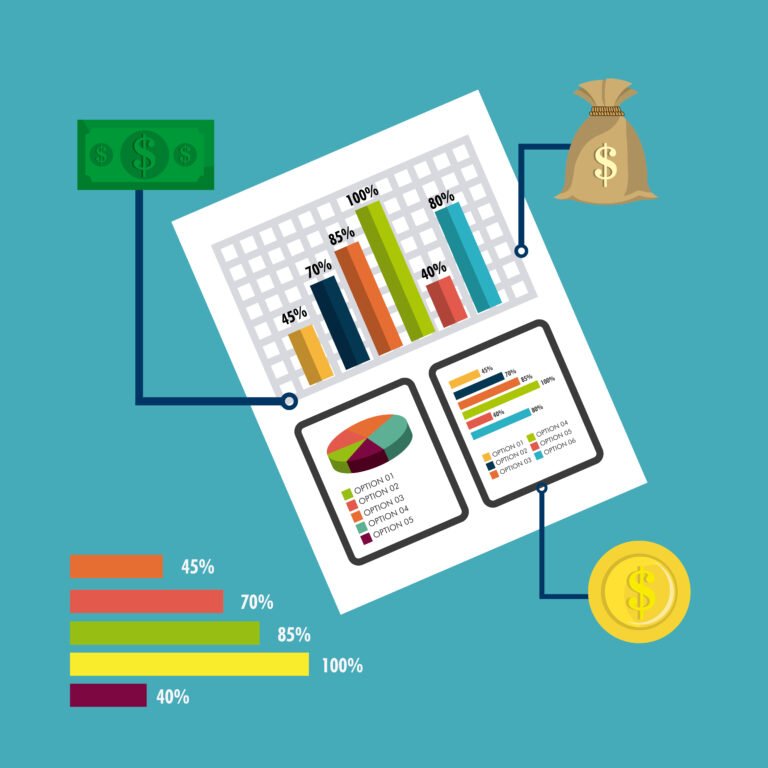7 Crypto Signal Strategies That Actually Work in 2025
1. The Rise of Crypto Signals in 2025
What Are Crypto Signals?
Crypto signals are curated trading suggestions that indicate the optimal time to buy, sell, or hold a specific cryptocurrency. These signals are generated through a combination of technical analysis, on-chain data, AI algorithms, and even insider insights from experienced traders. They typically include key trading details such as entry price, stop-loss, take-profit levels, and the asset in question. In 2025, crypto signals have become a cornerstone of both beginner and professional trading strategies.

Table of Contents
Why Traders Rely on Signals More Than Ever
With the crypto market becoming increasingly volatile, data-driven decision-making is no longer optional—it’s essential. Modern traders are overwhelmed by the speed, scale, and complexity of real-time data. That’s where crypto signals come in. They filter the noise and offer focused, actionable insights that allow traders to act fast and smart. Whether you’re day trading altcoins or holding blue-chip tokens, having access to reliable signals can dramatically boost success rates.
Automation + Human Insight = The New Edge
In 2025, the best crypto signals blend automation with human expertise. AI-powered bots can detect patterns and execute trades within milliseconds, while human analysts provide the context, sentiment analysis, and macro awareness that machines lack. This hybrid model is redefining how modern traders operate—offering precision, speed, and adaptability in a market that never sleeps.
2. Strategy #1: Leverage Real-Time On-Chain Data
Tracking Smart Money Movements
In 2025, successful traders don’t just follow the market—they follow the money. On-chain data gives you a window into the behavior of “smart money,” such as institutional investors, early adopters, and whales. By monitoring large transactions, wallet activity, and token movements across blockchains, you can anticipate market shifts before they hit the charts. When a well-known wallet suddenly accumulates a large position, it often signals an impending price move.
Using Whale Alerts and Wallet Analysis
Whale alerts have become a critical part of any trader’s signal stack. These real-time notifications track significant transactions (often millions of dollars) moving between wallets and exchanges. For instance, if a large amount of Ethereum is moved into an exchange, it may signal a sell-off; if it’s withdrawn, it often means accumulation. Tools like Etherscan, Arkham Intelligence, and Nansen let you dive deep into wallet histories to analyze patterns, follow smart contract activity, and identify recurring profitable behaviors.
Best Tools for On-Chain Signal Generation
The rise of Web3 analytics platforms has empowered retail traders with institutional-level insights. Here are some of the top tools in 2025 for generating on-chain signals:
- Nansen.ai – Tracks smart money and labels wallets (exchanges, VCs, whales).
- Arkham Intelligence – Offers wallet intelligence and identity attribution.
- Glassnode – Provides macro on-chain metrics and network health indicators.
- Whale Alert – Real-time tracking of high-volume blockchain transactions.
- DeBank – Ideal for multi-chain portfolio tracking and smart money follow-up.
By integrating these platforms with your trading setup—or even syncing alerts to your Telegram or Discord—you’ll never miss a major move again. Real-time on-chain data is no longer a competitive edge; it’s a necessity.
3. Strategy #2: AI-Powered Signal Bots
How AI Has Revolutionized Signal Accuracy
In 2025, artificial intelligence isn’t just assisting traders—it’s outperforming many of them. AI-powered signal bots have taken the guesswork out of crypto trading by analyzing massive volumes of market data in real time, identifying subtle patterns no human could detect, and generating ultra-precise signals. Unlike traditional signals based purely on technical indicators, AI considers market sentiment, historical data, trading volume spikes, social media trends, and even global news—all within milliseconds.
The result? Faster, more accurate, and often more profitable signals.
Adaptive Algorithms vs. Static Indicators
Old-school trading relied heavily on static technical indicators like RSI, MACD, and moving averages. While still useful, they lack the dynamic adaptability that modern AI systems offer. Today’s AI signal bots use machine learning models that continuously evolve based on real-time market feedback. They adapt to market volatility, learn from failed predictions, and recalibrate without manual intervention.
Adaptive algorithms can:
- Predict breakout points before they happen
- Identify fakeouts in volatile markets
- Adjust stop-loss and take-profit levels based on changing conditions
This shift from fixed rules to learning systems has completely transformed how crypto signals are created and trusted.
Trusted Platforms Offering AI Crypto Signals
If you’re looking to leverage AI-generated signals, choosing the right platform is key. In 2025, these tools stand out for their accuracy, transparency, and ease of use:
- 3Commas SmartTrade AI – Offers AI-assisted trading strategies and signal execution.
- CryptoHopper – Combines marketplace signals with AI-based strategy customization.
- Stoic by Cindicator – Fully automated AI portfolio management for crypto.
- TradeSanta – AI-powered bots that work with multiple exchanges, ideal for day and swing traders.
- Coinrule – Allows rule-based automation with AI optimization features.
Most of these platforms also integrate directly with exchanges like Binance, Bybit, and KuCoin, making it easy to automate your trading based on real-time AI-generated signals.
4. Strategy #3: Technical Analysis + Pattern Recognition
Top Indicators Still Used in 2025 (RSI, MACD, Fib Levels)
Despite the rise of AI and automation, classic technical analysis (TA) remains a core component of reliable crypto signal strategies in 2025. The key difference today is how these indicators are interpreted—more dynamically, more contextually, and often in combination with AI insights.
Some indicators still widely used and trusted include:
- Relative Strength Index (RSI) – Measures market momentum and identifies overbought/oversold zones.
- MACD (Moving Average Convergence Divergence) – Helps detect trend direction and momentum changes.
- Fibonacci Retracement Levels – Pinpoints likely support and resistance areas where price may reverse or bounce.
These tools don’t just signal entry or exit—they help traders understand market context, which is crucial in today’s fast-paced trading environment.
Recognizing Breakouts, Fakeouts & Reversals
One of the biggest skills modern traders develop is the ability to differentiate a true breakout from a fakeout. Signal accuracy increases dramatically when paired with smart pattern recognition.
Key patterns to monitor in 2025:
- Ascending/Descending Triangles – Common breakout patterns.
- Double Tops and Bottoms – Often signal reversals.
- Bearish/Bullish Engulfing Candles – Short-term trend reversal indicators.
- Volume Spikes – Confirm breakout strength or expose fakeouts.
With bots and institutions now manipulating short-term price movements more than ever, pattern recognition helps validate signal integrity before acting.
Combining TA with Signal Alerts for Precision
Today’s best traders aren’t manually watching charts all day—they’re using custom TA-based signal alerts to act only when ideal conditions are met. Platforms like TradingView, Coinigy, and MetaTrader 5 allow traders to:
- Set alerts based on indicator conditions (e.g., “RSI crosses below 30”)
- Combine multiple indicators for layered confirmation
- Trigger alerts via Telegram, email, or even direct bot execution
By blending classical TA with modern alert systems, traders reduce emotional bias and act with confidence and precision—maximizing profits and minimizing mistakes.
5. Strategy #4: Community-Driven Signals (Telegram, Discord)
The Power of Collective Analysis
In 2025, some of the most actionable crypto signals still come from tight-knit trading communities. Platforms like Telegram and Discord have evolved into real-time hubs where traders share insights, charts, news, and live calls. These communities create a collective intelligence system—when enough experienced eyes are on the market, quality signals emerge faster than from any single source.
Many traders now supplement automated tools with human-curated signals from trusted groups, giving them the best of both worlds: speed and strategy.
Spotting Reliable vs. Hype-Based Signals
Not all signal groups are created equal. The biggest risk in community-driven signals is falling for hype—especially in pump-and-dump style groups or influencer-driven channels.
Here’s how to separate signal gold from noise:
- ✅ Track Record: Does the group provide past performance stats and win/loss ratios?
- ✅ Transparency: Are signal entries, SL, and TP clearly defined?
- ✅ Education over Hype: Do they explain the rationale or just shout “Buy NOW!!!”?
- ❌ Shilling Projects: Avoid groups that push tokens with no analysis or just chase low-cap FOMO.
Joining quality groups can expose you to high-conviction trades, crowd sentiment, and new opportunities—but due diligence is key.
Must-Join Crypto Signal Communities in 2025
Here are some well-regarded communities that consistently deliver value (some may offer free and premium tiers):
- Crypto Rand Group – Professional analysis with macro/fundamental insights
- Rekt Capital Discord – Strong focus on Bitcoin and TA education
- Income Sharks Telegram – Real-time altcoin calls with TA explanations
- Verified Crypto Traders – Premium signal group with clear trade setups
- Alpha Impact – Social copy trading meets pro signal feeds
Many of these also integrate tools like bots, performance dashboards, and portfolio trackers to help members manage trades better.
6. Strategy #5: Copy Trading from Signal-Proven Portfolios
Following Top Traders via Signal Automation
In 2025, one of the easiest ways to trade like a pro is by copying one. Copy trading allows users to automatically replicate the trades of top-performing traders in real time. These traders often base their decisions on powerful signal strategies, refined over years of experience and testing.
The beauty of this method? You don’t need to interpret charts or scan the market. Once you connect your account, trades are mirrored instantly—entry, exit, stop-loss, and all. It’s a game-changer for time-strapped investors or beginners seeking passive growth.
Platforms That Offer Verified Copy Trading
A major advancement in 2025 is the shift to transparent, verified trader performance. Copy trading platforms now offer leaderboards with actual ROI metrics, win/loss ratios, and risk profiles—making it easier than ever to pick traders that align with your goals.
Top platforms include:
- eToro – Pioneer in social/copy trading with robust filters and community interaction
- Bybit Copy Trade – Allows automated copy trades with proven portfolio managers
- Zignaly – Features pro traders and allows for profit-sharing models
- 3Commas Smart Bots – Offers automated signal-based trading from successful strategies
- Binance Copy Trading (New in 2025) – Fully integrated with Binance accounts and portfolio analytics
Always vet trader stats, strategy descriptions, and trade frequency before following anyone blindly.
Managing Risk While Following Others
Copy trading isn’t risk-free. Even top traders have losing streaks. To protect your capital:
- ✅ Diversify across multiple traders or strategies
- ✅ Set max loss limits per day or week
- ✅ Use trailing stop-loss and exit rules
- ✅ Monitor performance regularly, not passively
Remember: you’re still the portfolio manager—even if someone else is making the calls.
7. Strategy #6: Multi-Signal Confirmation Strategy
Why Relying on One Signal Is Risky in 2025
Crypto markets in 2025 are more manipulated, AI-driven, and unpredictable than ever. Relying on a single signal—no matter how accurate in the past—is a recipe for losses. Smart traders now demand confirmation from multiple signal types before entering any trade.
Why? Because one indicator might point to a breakout while others warn of exhaustion. Cross-verification increases reliability and reduces false signals—especially in volatile conditions.
Combining Technical, Fundamental, and Social Signals
To build a multi-signal strategy, combine insights from three key areas:
- 📊 Technical Signals: Indicators like RSI, MACD, and chart patterns to time entries/exits.
- 🧠 Fundamental Signals: News events, tokenomics, partnerships, or project updates that affect intrinsic value.
- 📢 Social/Market Sentiment Signals: Twitter activity, Telegram buzz, Reddit discussions, or influencer trends that affect short-term hype and fear.
Example:
If RSI is low (technical), there’s bullish news about a major listing (fundamental), and crypto Twitter is heating up (social)—that’s a strong multi-confirmation setup.
Creating Your Own Signal Checklist
Before acting on any trade, use a pre-defined checklist to validate the signal:
✅ Does the chart show a clean setup (breakout/retest/support)?
✅ Is volume confirming the move?
✅ Are there positive (or negative) fundamental catalysts?
✅ Is the community sentiment aligned or diverging?
✅ Are alerts triggering across multiple tools/platforms?
This approach builds discipline and consistency—two things most traders lack when acting emotionally or impulsively.
8. Strategy #7: Time-Sensitive Signals for Scalping & Swing Trades
Short-Term Signal Tactics That Still Work
Scalping and swing trading remain two of the most popular strategies for crypto traders in 2025—especially in high-volatility markets. These methods rely heavily on precision-timed signals, often with narrow windows for execution.
Some proven short-term tactics include:
- Scalping signals based on 1-minute and 5-minute charts
- Breakout signals from consolidation zones
- Volume spike detection before sudden moves
- News-based entries (listing announcements, regulation updates, etc.)
These signals require speed, discipline, and the right tools—but when executed correctly, they deliver fast, compounding results.
Ideal Timeframes for Day vs. Swing Trading
Knowing when to use which timeframe is critical for short-term strategies:
- Scalping: Best on 1m, 3m, and 5m charts. Focus on high volatility pairs and use tight stop-losses.
- Day Trading: Use 15m to 1H charts. Look for early trend formation and capitalize on intraday volatility.
- Swing Trading: Use 4H to 1D charts. This suits traders who prefer to hold positions for several days or weeks.
The right timeframe helps match the signal type to your risk tolerance and trading style.
How to Avoid Signal Lag in Fast Markets
Lag can kill profitability in short-term trading. Many signals are delayed by seconds or minutes—just enough to turn a winning trade into a bad entry.
To avoid lag:
- ✅ Use websocket-based data feeds instead of delayed REST APIs
- ✅ Subscribe to low-latency signal providers (some integrate directly with exchanges)
- ✅ Automate execution with bots using real-time alerts
- ✅ Avoid relying solely on visual alerts or email—use Telegram bots or mobile push notifications
Speed is your edge in scalping. A delayed signal is often a missed opportunity—or worse, a trap.
9. Common Mistakes to Avoid With Crypto Signals
Even the best signals won’t save you from poor decision-making. Here are the most critical mistakes traders make when using crypto signals:
Blindly Trusting Paid Groups
Just because a signal is paid doesn’t mean it’s high quality. Many Telegram and Discord groups promise unrealistic returns and manipulate members into FOMO trades. Always look for:
- Verified trade history
- Clear reasoning behind signals
- Consistent performance, not just a few lucky wins
If a group doesn’t educate or explain their calls, it’s a red flag.
Ignoring Market Context
A good signal in the wrong market is still a bad trade. Don’t follow a bullish signal when:
- Bitcoin is dumping hard
- Major economic events (like Fed meetings) are pending
- Overall market sentiment is fearful
Context is king. Always zoom out and assess the bigger picture before trusting any single trade.
Overtrading Based on Signal Noise
More signals ≠ more profits. In fact, signal overload can lead to overtrading, burnout, and poor decisions. Stick to a focused set of reliable sources and:
- Don’t jump on every alert
- Filter trades through your personal strategy
- Focus on quality over quantity
Discipline, patience, and selectivity are what separate profitable traders from signal chasers.
10. Final Thoughts: Mastering Crypto Signals for Smarter Trading
Crypto signals in 2025 are smarter, faster, and more accessible than ever—but they’re only as good as the strategy behind them. Whether you’re using AI-powered bots, tracking on-chain whale movements, or following seasoned traders via copy trading, the real power lies in combining technology with human judgment.
The key takeaway? Don’t blindly follow signals. Understand the “why” behind them. Build a strategy that suits your risk level, timeframe, and goals. Use confirmation methods, test what works, and stay disciplined.
Signals aren’t magic—they’re tools. And when used wisely, they can give you a massive edge in one of the world’s most unpredictable markets.
FAQs: Crypto Signals in 2025
1. Are crypto signals legal?
Yes, crypto signals are legal in most countries as long as they don’t involve insider trading or financial fraud. However, always check local regulations, especially if you’re part of a paid signal service.
2. Can beginners use crypto signals effectively?
Absolutely—but beginners should start with education-focused signal providers that explain the reasoning behind each call. Copy trading or simulated accounts are also great ways to learn with less risk.
3. What’s better: free or paid crypto signals?
Paid groups often offer more consistent and structured signals, but not always. Free communities can also be highly valuable if curated well. Look for transparency, not just price tags.
4. Is AI-generated signal trading better than manual analysis?
AI can enhance speed and accuracy, especially in scalping or real-time alerts. However, combining AI with human insight (for fundamentals and sentiment) often produces the best results.
5. How do I protect myself from fake or scam signal groups?
Watch for unrealistic promises (e.g., “1000% ROI in 7 days”), lack of trade history, and pressure to act fast. Join communities with verified results and strong reputations.
Read Also: 5 Proven Ways to Interpret Crypto Signals Like a Pro







